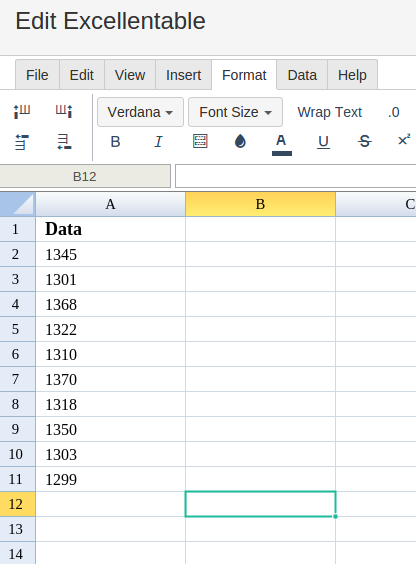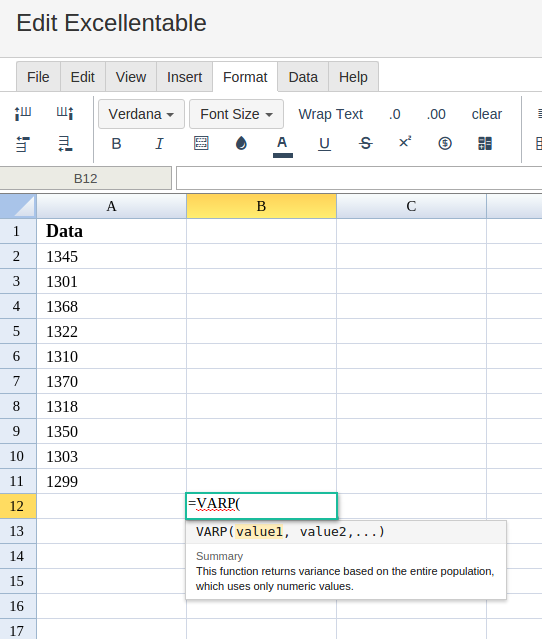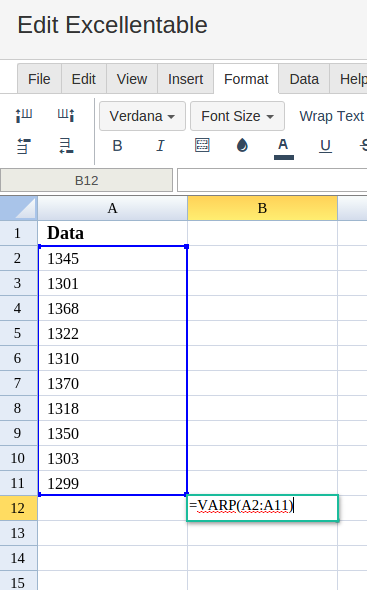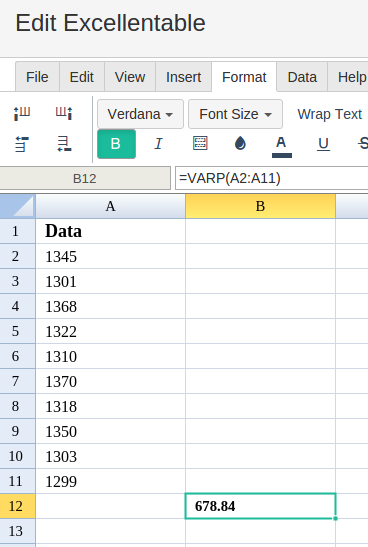VARP
Definition
Calculates the variance based on an entire population.
Sample Usage
VARP(1,2,3,4,5,6,7,8,9,10)
VARP(A2:A100)
Syntax
VARP(value1, [value2, ...])
value1- The first value or range of the population.value2, ...- Additional values or ranges to include in the population.
Notes
Although
VARPis specified as taking a maximum of 30 arguments, Excellentable supports an arbitrary number of arguments for this function.If the total number of values supplied as
valuearguments is not at least two,VARPwill return the#NUM!error.VARPwill return an error if any of thevaluearguments include text. To calculate variance while interpreting text values as0, useVARPA.VARPcalculates variance for an entire population. To calculate variance across a sample, useVAR.VARPtakes the sum of the squares of each value's deviation from the mean and divides by the number of such values. This differs from the calculation of variance across a sample in that the latter divides by the size of the dataset minus one.
See Also
VARPA: Calculates the variance based on an entire population, setting text to the value `0`.
VARA: Calculates the variance based on a sample, setting text to the value `0`.
VAR: Calculates the variance based on a sample.
STDEVPA: Calculates the standard deviation based on an entire population, setting text to the value `0`.
STDEVP: Calculates the standard deviation based on an entire population.
STDEVA: Calculates the standard deviation based on a sample, setting text to the value `0`.
STDEV: Calculates the standard deviation based on a sample.
SKEW: Calculates the skewness of a dataset, which describes the symmetry of that dataset about the mean.
KURT: Calculates the kurtosis of a dataset, which describes the shape, and in particular the "peakedness" of that dataset.
DVARP: Returns the variance of an entire population selected from a database table-like array or range using a SQL-like query.
DVAR: Returns the variance of a population sample selected from a database table-like array or range using a SQL-like query.
DSTDEVP: Returns the standard deviation of an entire population selected from a database table-like array or range using a SQL-like query.
DSTDEV: Returns the standard deviation of a population sample selected from a database table-like array or range using a SQL-like query.
DEVSQ: Calculates the sum of squares of deviations based on a sample.
AVEDEV: Calculates the average of the magnitudes of deviations of data from a dataset's mean.
In order to use the VARP formula, start with your edited Excellentable:

Then type in the VARP formula in the area you would like to display the outcome:


By adding the values you would like to calculate the VARP formula for, Excellentable will generate the outcome:

A
|
B
|
|
|---|---|---|
1
|
||
2
|
||
3
|
||
4
|
||
5
|
||
6
|
||
7
|
||
8
|
||
9
|
||
10
|
||
11
|
||
12
|
||
13
|
